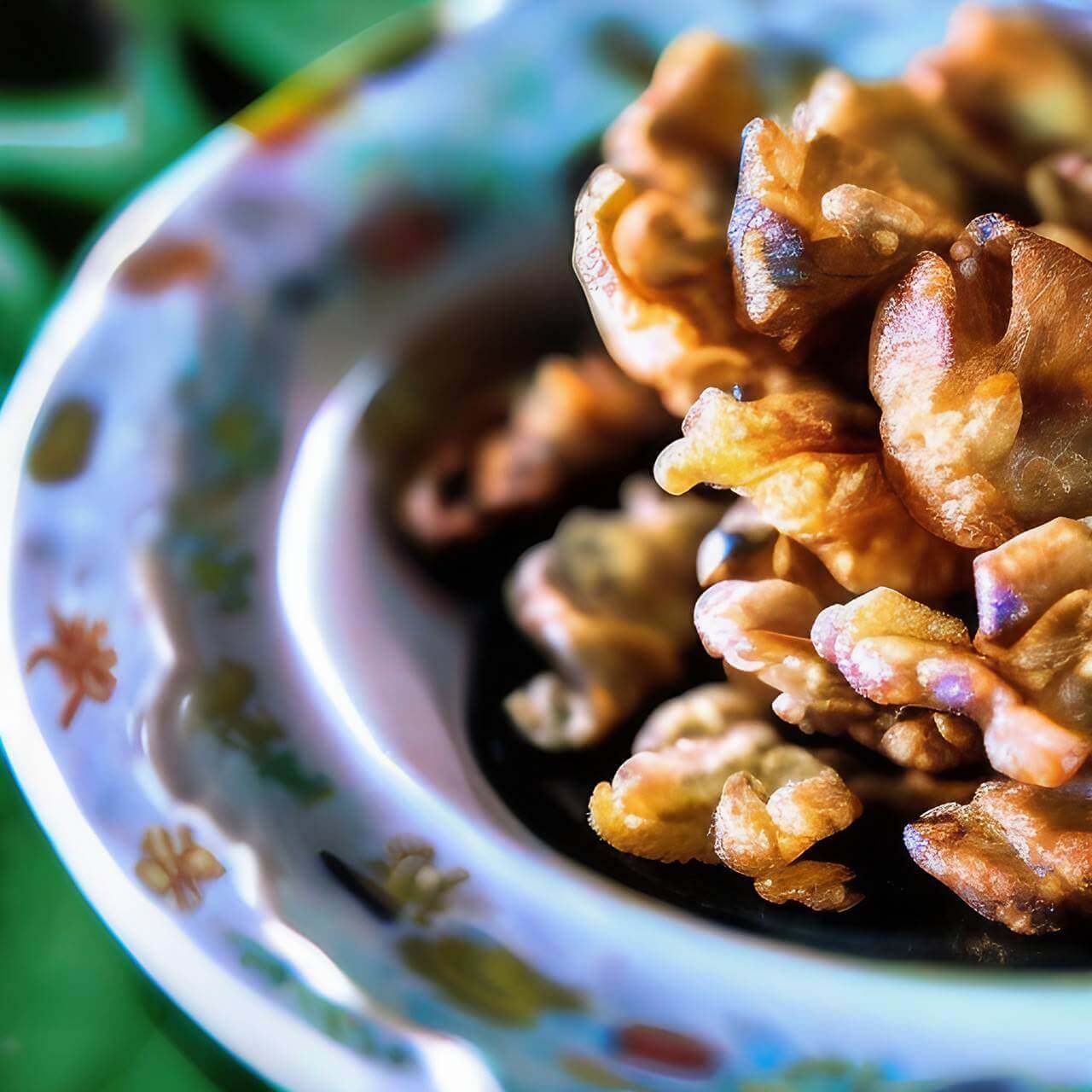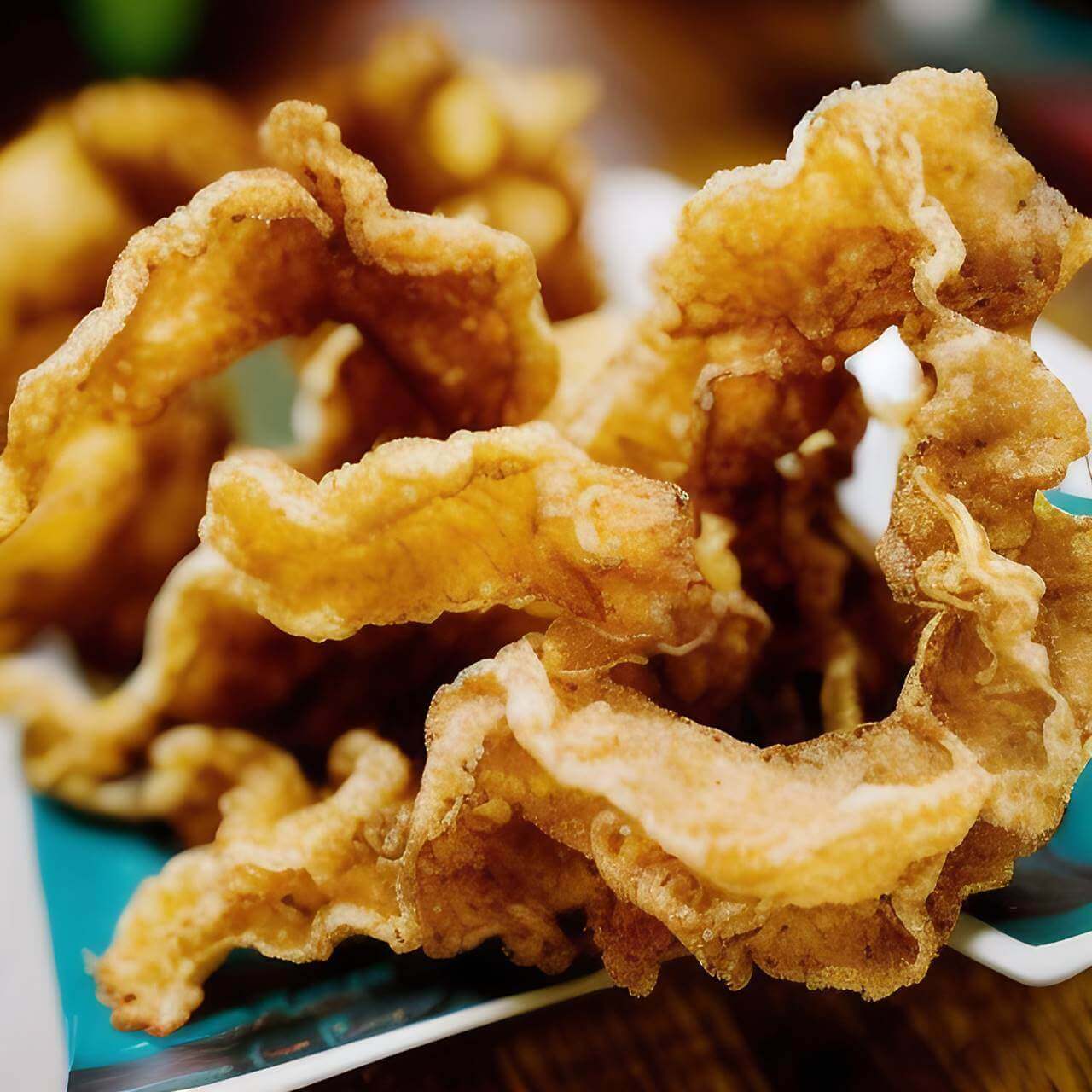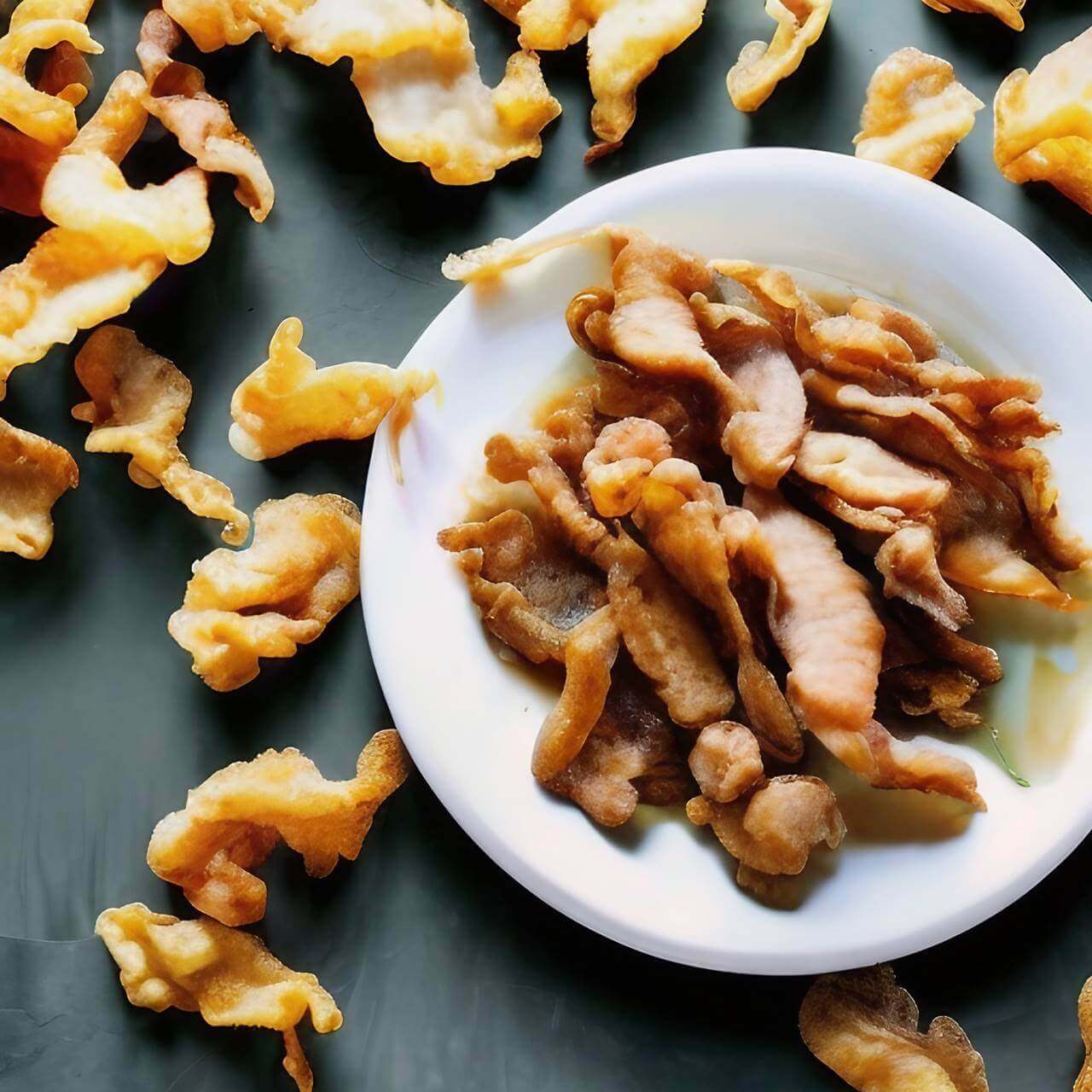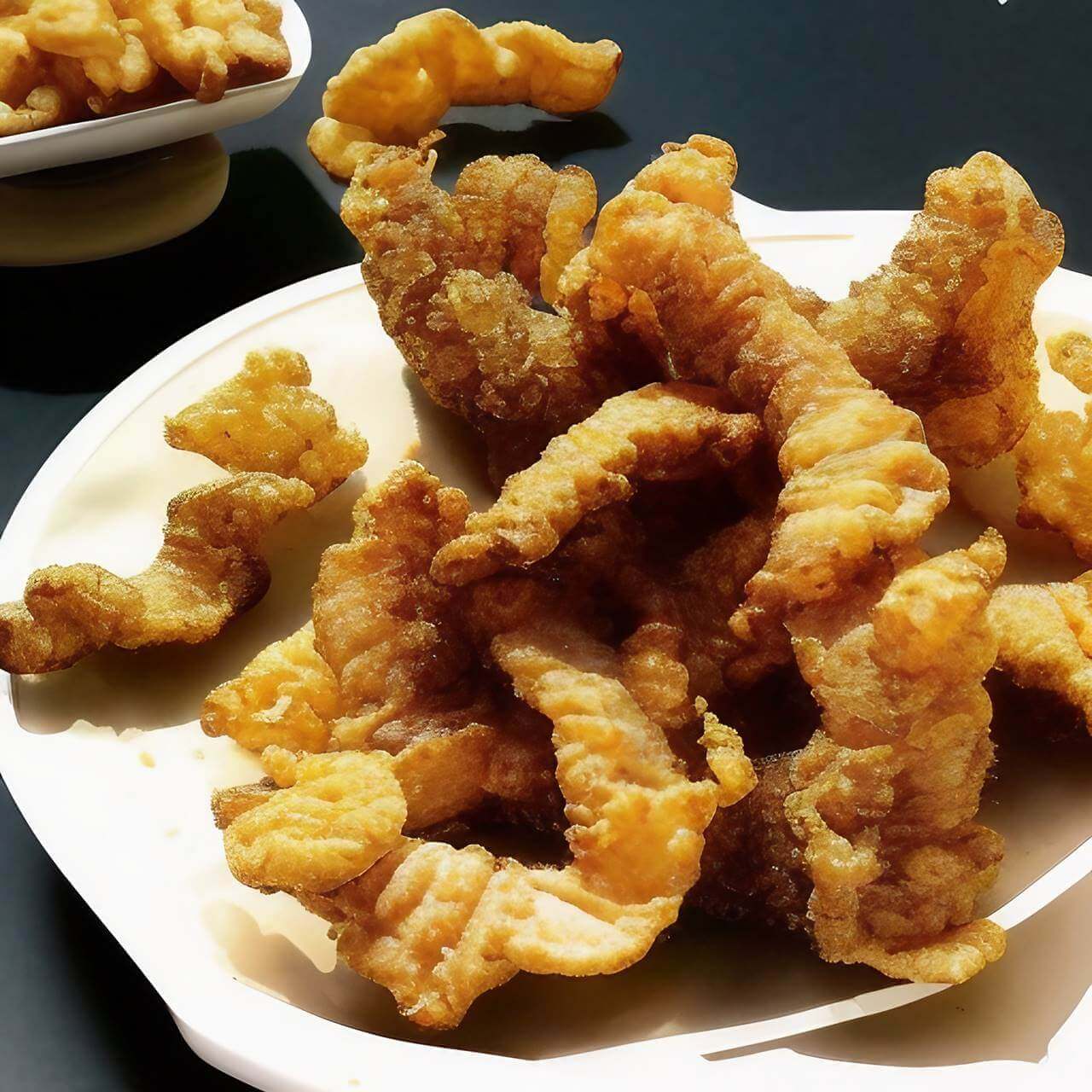Chicharon Carcar Cebu is a delicious snack that’s popular in the Visayas region of the Philippines. It’s made by deep-frying pork rinds until they become crispy and golden brown. While there are several recipes for chicharon Carcar Cebu, this one uses basic ingredients to create an authentic version of this snack.
The history of Chicharon in the Philippines extends far back to before Spanish settlement. The Spaniards brought with them a variety of new items, including this delicious pork delicacy that has now become an integral part of Filipino cuisine. Carcar City is renowned for its many street vendors offering Chicharon!
Also Read: How to Cook Filipino Pork Barbecue
To make chicharon Carcar Cebu, start by selecting the right cut of pork. The best cuts are from the shoulder, belly or jowls. Trim any excess fat and remove the skin if desired. Cut the pork into small strips about 1 to 2 inches in length. Soak these pieces in a mixture of 1/2 cup of water, 1/4 cup of vinegar, and 2 tablespoons of salt for at least an hour. This helps to tenderize the pork and remove any impurities from it.
Next, heat a deep fryer with enough oil to cover the pieces. When the oil is hot enough (360 degrees F or 182 degrees C), carefully drop in the pork strips. Fry your Carcar Cebu chicharon until they become golden brown and crunchy. This process will take around 8 minutes. Once completed, remove the oil and drain off any excess grease on paper towels before seasoning with salt to taste. Serve hot with a range of delicious dipping sauces.
Transform your scrumptious Filipino dishes with Sukang Sawsawan, my personal favorite! This spiced vinegar dipping sauce is expertly crafted to bring out the best combinations of tangy, sour, sweet and spicy flavors. Making it the ideal condiment for Lechon Kawali, Crispy Pata, Lumpiang Gulay Barbecue or any other local favourites.

Ingredients for the Chicharon
- 1 kilogram of pork skin with just enough fat and meat remaining.
- 1 tbsp. rock salt
- 1 tsp. ground black pepper
- water for boiling the skin
- cooking oil for frying
Steps to Cook the Chicharon
- Dice the pork rinds into 1 ½ – 2-inch pieces. Don’t be alarmed if they seem to shrink in size while baking, as this is due to fat rendering; however, when deep-fried in hot oil these cubes will expand and puff up!
- Cook the ingredients until tender, yet still firm. To infuse flavor you can use my go-to mixture of vinegar, peppercorns, garlic cloves and salt. Once finished cooking, drain away any excess liquid then place in the refrigerator to chill completely.
- Place the meat in an even layer on a rack, and dehydrate until it is brittle and shrunken. In years past, people would leave them out under the sun to draw out moisture; however, this method isn’t practical during colder months or sanitary. For these reasons, I tend to use my oven for drying the skins instead.
- Fry your food in hot oil until it’s golden and crispy, and begins to float. As a bonus for the best texture possible, be sure not to overcrowd your pan; fry your ingredients in batches if needed so that you can maintain the ideal oil temperature throughout cooking time.
- Lift the food off of the pan and place it on a wire rack where any extra liquid can strain away. Enhance with salt and spices to suit your taste.

Ingredients for the Chicharon Sauce
- 1/4 cup white vinegar or any type of vinegar you like
- 1/8 tablespoon table salt or 1/4 tablespoon cooking salt (a bit coarser)
- 1/4 tablespoon white sugar
- 1 red bird eye chili, deseeded and cut into short strips
- 1 clove of garlic, crushed
- pinch of pepper
- 1 finely chopped red or white onions
Steps to Make the Chicaron Sauce
- Gently combine all ingredients in a small bowl and stir until the sugar has completely dissolved.
- Leave the mixture to sit for 25-30 minutes, and then conduct a taste test. If you feel it needs more salt, sugar or black pepper, add as desired; however, remember that the water should help reduce any sourness so use sparingly if necessary.
- Securely seal your ingredients in an airtight glass container, away from direct sunlight and store it in a cool area of your kitchen.

Tips
Creating this delightful and crispy pigskin dish is easy if you follow a few simple tips. Knowing these essential details can give you an edge in the kitchen, so here are some of the most important steps to consider for making it:
- To contain the inevitable mess while frying, use half a lid to cover your pan. This serves as an effective shield that will save you from oil splatters!
- To be sure your chicharon is cooked to perfection, look for a golden brown hue and some curling. Additionally, if the item floats in its oil it’s likely ready to devour!
- After you’ve cooked your pork rinds in the pan, be sure to season them for optimal flavor. This will ensure that they absorb all of the delicious tastes and aromas that you wish to impart on them!
- If you’re truly looking to explore the depths of Filipino cuisine, there’s no better way to do it than by trying different dipping sauces for your pork rinds. Instead of just relying on vinegar alone, why not switch it up and try bagoong, Lechon liver sauce, pickled papaya or Atchara? This will provide an entirely new level of flavor that you won’t find in any other dish!
- For those maintaining a Low Carb diet, coconut oil is an excellent alternative to the usual cooking oils – it’s versatile, healthy and delicious!
- Revive your pork rinds’ crunchy texture by reheating them in the microwave. You’ll be amazed by how effective and efficient this method is!
- If you are on a nutrition plan, incorporating olives into your vegetable salad is an excellent way to satisfy your urge for something salty without derailing from your health goals.
Following these tips and tricks will give you the confidence to make Chicharon Carcar Cebu with ease. With a little practice, you’ll be able to master the art of creating this sweet and savory snack! Enjoy!
Frequently Asked Questions
1. How do I store the Chicharon Sauce?
To ensure maximum freshness and flavor, be sure to store your ingredients in an airtight glass container away from direct sunlight. Place them in a cool area of your kitchen for best results!
2. Is frying pork skin unhealthy?
While it is high in caloric value and cholesterol, it can be enjoyed without guilt provided that you opt for healthier cooking oils such as coconut oil. Additionally, moderation is key – enjoy this snack occasionally rather than regularly!
3. Are there any alternatives to frying pork skin?
You can always bake the pork skin instead of frying it. This method will be relatively healthier, and has the added benefit of being easier to clean up after. With a little practice, you’ll be able to prepare Chicharon Carcar Cebu with ease!
4. What type of vinegar is traditionally used for dipping?
White vinegar or cider vinegar are most commonly used. However, you can always get creative and try different dipping sauces such as bagoong, Lechon liver sauce, pickled papaya or Atchara for an added kick of flavor!
5. Can I use frozen pork skin instead?
Yes! Although using fresh is ideal, frozen pork skin will also work. Just defrost it before cooking.
6. How can I make sure my Chicharon Carcar Cebu remains crunchy?
To keep your pork rinds crispy and delicious, reheat them in the microwave! This will help to maintain their crunchy texture and savoriness that everyone loves. Enjoy!

Summary
In conclusion, making Chicharon Carcar Cebu is not as hard as it may seem! With these tips and tricks in mind, you’ll be able to master the art of creating this savory snack with ease. From using half a lid to cover your pan during frying to experimenting with different dipping sauces for added flavor – there are plenty of ways that you can make sure your pork rinds turn out delicious every time.
Additionally, if you’re looking for healthier alternatives don’t forget about baking or trying coconut oil instead. Enjoy exploring Filipino cuisine while being creative in the kitchen!